In a world full of competing content and experiences, standing out at events isn’t easy. Brands are constantly looking for creative ways to engage attendees and leave a memorable impression.
Virtual Reality (VR) has emerged as a powerful solution, giving event planners and marketers the ability to captivate audiences through immersive, interactive experiences. Whether you’re aiming to impress stakeholders, educate attendees, or showcase a product in a bold new way, VR can elevate your booth value like no other.
This article explores how VR can improve event engagement, what industries can benefit most from it, and practical tips for implementing a technology like VR successfully at your next event.
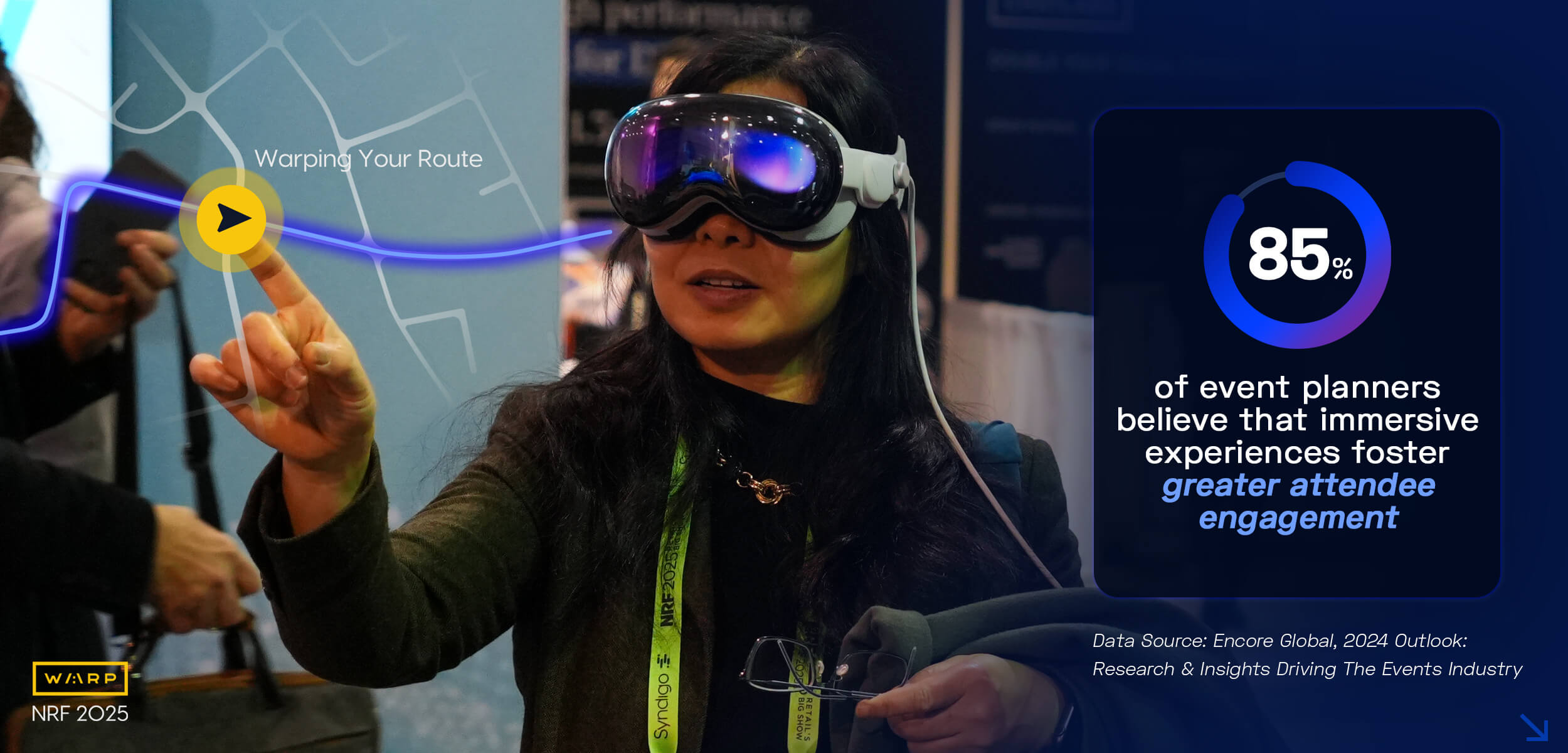
Key Takeaways:
- 93% of event planners are likely to use immersive technology to engage event attendees.
- VR is ideal for showcasing large-scale products, visualizing digital services, or creating immersive experiences that teleport users to different environments.
- It’s critical to consider sound management, device charging, and device cleanliness when activating a VR experience for events.
- VR creates interactive, connected experiences that result in deeper engagement and boosts socials with more “you had to be there” sharing.
Why Use Virtual Reality for Events?
Traditional displays can struggle to grab attention. VR, on the other hand, invites people to step into an experience — creating a stronger emotional connection and leaving a lasting impression. Well-crafted VR experiences offer a fresh and memorable way to engage field event attendees by immersing them in interactive, story-driven experiences.
Experiential marketing can attract crowds by offering a unique experience attendees can’t find elsewhere. When users are put directly inside a branded experience it helps them visualize complex ideas and large-scale objects in an interactive way. RPR developed an exclusive VR race game on the Lenovo ThinkReality VRX headset, to deliver an immersive F1 racing simulator that put attendees in the driver’s seat of a high-speed race car. Inspired by traditional slot car racing, the “VRX Speedway” was featured in the prestigious Paddock Club for the Japanese Grand Prix and United States Grand Prix in Austin, TX. Such experiences can increase social sharing, brand loyalty and retention rates by giving users an experience worth talking about for a long time.
But does using VR in events actually attract people to your booth? Yes — and for good reasons. There are several examples of how popular brands have used VR in Events at major events and conferences for immediate attention. VR is still a novelty for many attendees, making it an immediate draw at busy events. People are naturally curious about interactive experiences, and a well-executed VR activation can outshine static displays.
What about attendees that don’t want to put on a headset? We always recommend streaming the experience to a TV display to create a “Spectator View” to invite a crowd to watch the unique experience. Not only does this build excitement, but it also increases your reach and throughput beyond the VR headset.
By giving attendees an experience they can’t easily access elsewhere, using VR in events adds excitement to your booth and provides a memorable reason for visitors to bring their friends, and generate chatter about the booth and brand activation.
Let’s chat
Not sure where to start? Book a free strategy call with us to get started! No strings attached.
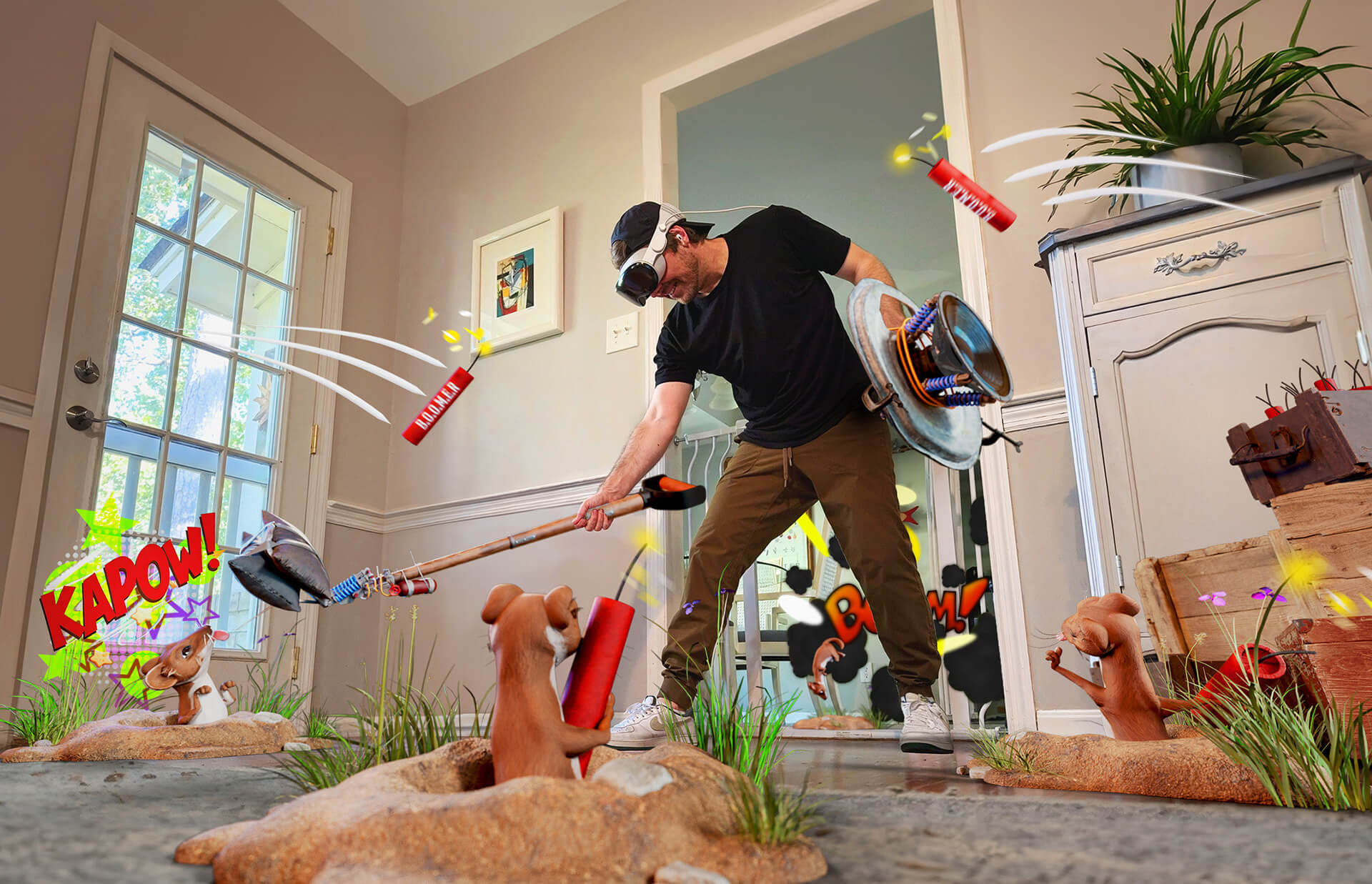
Where Does VR Shine in Events?
VR is most impactful when used strategically in industries that benefit from immersive storytelling, product visualization, or hands-on engagement. Apart from that, virtual reality games at events or company booths are also used as instant attention-grabbers. By offering experiences that traditional displays simply can’t match, VR creates moments that captivate and inform.
Here’s how VR is being used effectively across key industries including:
- B2B & Corporate Events
- Manufacturing, Construction & Utilities
- Sports & Live Events
- Technology
- Consumer Brands
- Automotive
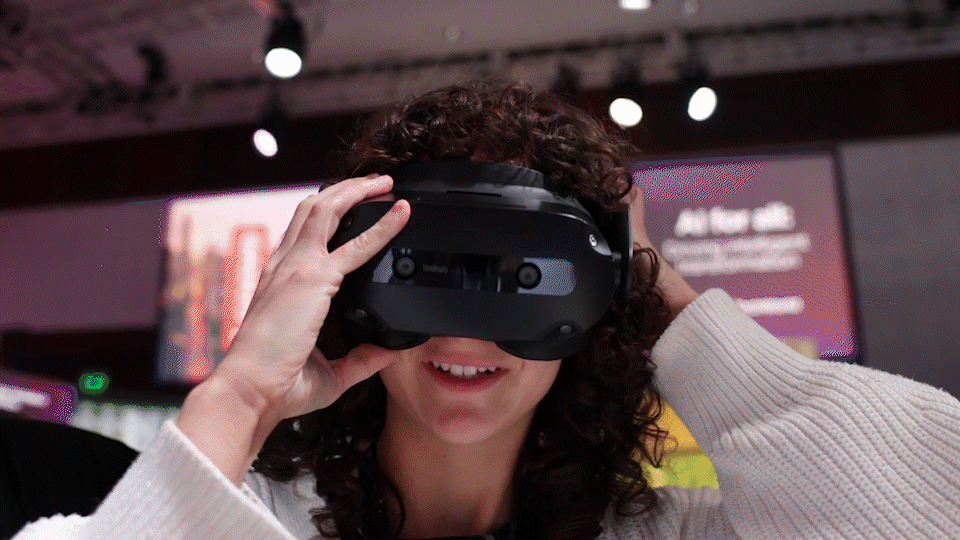
B2B & Corporate Events
Corporate events often focus on delivering complex ideas, data, or concepts — and that’s where VR can transform dry information into engaging experiences. The global B2B trade show market had surpassed $40 billion by 2023, where VR is used to enhance conferences, summits, and networking events by turning abstract ideas into interactive, immersive experiences. Imagine a financial services firm using VR to visualize market trends in 3D, giving conference attendees the ability to interact with economic data as if they were walking through a cityscape.
VR in events can turn keynote presentations, networking lounges, and booth spaces into interactive learning environments that leave a lasting impression.

Warp at NRF 2025 featuring the Apple Vision Pro experience we built
Manufacturing, Construction & Utilities
For industries dealing with large-scale equipment, construction sites, or complex infrastructure, VR offers a way to showcase these systems without the need for physical setups. For instance, a construction firm might use VR to offer virtual site walkthroughs, training, or product introductions, allowing clients to explore unfinished projects in full scale.
Similarly, utility companies can create VR simulations that demonstrate how power grids operate or show off large-scale machinery with interactive layers that break down key components. This makes VR ideal for educating stakeholders, training staff, or giving clients an inside look at technical processes.
A great example is the VRX onboarding experience we built for Lenovo’s ThinkReality headset, which includes VR simulations for oil rig safety — demonstrating how immersive training can prepare workers for complex, high-stakes environments.
Sports & Live Events
VR has proven to be a game changer for fan engagement at live events. Sports brands are increasingly using VR to create interactive experiences that bring fans closer to the action. For example, a football club could offer VR experiences that place fans on the sidelines of a match, giving them a unique vantage point of the game.
VR enhances fan engagement with interactive experiences, behind-the-scenes content, and virtual meet-and-greets.
Technology
For tech companies VR creates a powerful way to demonstrate complex ideas in simple, engaging ways. For example, firms could design a VR simulation that visualizes digital threats as animated waves attacking a virtual network, showing users how their system responds in real-time.
Companies in software, hardware, Web3, gaming, and AI leverage Virtual Reality to bring technical concepts to life in a clear and engaging way.
The Apple Vision Pro experience we built for Warp was showcased at NRF 2025 to attract and educate conference attendees by dynamically visualizing AI-powered shipping routes and highlighting the most efficient paths.
Consumer Brands
By immersing users in creative brand storytelling, VR turns passive observers into active participants. VR activations create shareable, high-impact experiences at pop-ups, product launches, and retail events.
For instance, a fashion brand could use VR experiential marketing to let attendees design and customize their own digital runway show, interacting with 3D clothing designs in a virtual environment. These interactive experiences not only attract crowds but also encourage social sharing, driving visibility far beyond the event itself.
Automotive
For automotive brands, VR offers a compelling way to showcase vehicles without requiring showroom floor space. Using VR, attendees can step inside the latest car models, explore interior features, or experience a simulated test drive — all from within a compact event setup.
VR excels in showcasing vehicle features, offering driving simulations, and visualizing car interiors in immersive detail. For example, a car brand launching an electric vehicle could use VR to let users virtually explore the battery system, interiors, learn about performance upgrades, or see the vehicle’s environmental impact visualized in real-time. This approach not only educates visitors but also helps potential buyers connect with the product on a deeper level.
As part of the VRX onboarding experience built for Lenovo’s ThinkReality headset, we created VR training simulations for an automotive assembly line — showcasing how VR can immerse users in complex processes with clarity and precision.
Keep up to date
Sign up to our newsletter for exclusive updates and content, delivered directly to your inbox.
Technical and Logistical Considerations for VR at Events
To maximize the impact of VR at your event, it’s important to address some key technical and logistical considerations. By planning ahead, you can ensure your VR experience is smooth, engaging, and memorable. Some key considerations include:
- Sound Management
- Cleaning & Hygiene
- Device Charging
- Space & Safety
Sound Management
Events are often loud, and clear audio is crucial for an immersive VR experience. Using high-quality headphones or enclosed VR setups can help maintain sound clarity and focus. Noise-canceling headphones are ideal for isolating attendees from background noise, especially in busy trade shows or live events. Additionally, consider spatial audio to enhance immersion — this can help guide users or create a stronger emotional connection within the experience. Some experiences might even be designed for your team to talk the user through it while you have a captive audience.
Cleaning & Hygiene
With multiple attendees sharing the same equipment, hygiene is critical. Regular cleaning between uses keeps devices safe and comfortable for all participants. Quick-dry disinfecting wipes are an effective option for fast turnarounds, while UV sanitizing devices offer a touch-free, automated solution for high-traffic events. As seen in SXSW 2025 at the Astreas booth, providing disposable face covers for VR headsets is another simple yet effective way to maintain hygiene and comfort for guests.
Device Charging
Keeping VR devices charged is essential to avoiding interruptions during the event. It’s wise to assign a team member or technician focused on managing battery levels, creating a rotation system with fully charged backup units, and setting up convenient charging stations can help minimize downtime. For wireless headsets, consider power banks or modular battery packs to extend operating hours. A tip from our hands-on experience with event based VR is to turn off-and-on the headsets (restart) after every 3-4 demonstrations to ensure technical consistency and avoid device overheating.
Space & Safety
Creating clear boundaries for VR experiences is vital for attendee safety. Designate a spacious area free from obstacles, and use floor markings or low barriers to define movement zones. For experiences requiring greater mobility, staff guidance and supervision can prevent collisions or injuries. We suggest you consider seated VR setups for experiences that require minimal movement or focus on visual storytelling rather than physical interactivity.
This is one challenge in particular that Mixed Reality helps with. Because it uses the front-facing cameras to stream through a live feed of the space around them, Mixed Reality is easier for users to get accustomed to. Mixed Reality brings digital overlays into the physical space instead of transporting the user to a different virtual environment.
You can see how Mixed Reality works through this game we built for Apple Vision Pro and Meta Quest 3.
Common Challenges When Using VR for Events
VR is a powerful tool to use. As the technology for it keeps iterating and advancing, there can be some common concerns and challenges that brands should prepare for:
- Cutting Through the Noise
- Balancing Engagement with Scalability
- Measuring ROI
- Staying Ahead of Trends
Recorded by Omead Sinai at CES 2025
Cutting Through the Noise
With so many exhibits competing for attention, your VR experience must stand out. Offering something unique, valuable, or highly interactive will increase its appeal. Consider building your VR content around exclusive product previews, personalized storytelling, or interactive elements that allow attendees to influence the experience.
Balancing Engagement with Scalability
Immersive VR experiences can sometimes slow down event flow, especially if only one user can participate at a time. To prevent bottlenecks, design VR content that allows for multiple users or faster session times. For example, using pre-recorded guided VR tours or self-paced experiences allows guests to engage at their own pace without waiting for assistance. You can also set up registrations for 15-20 time-slots or keep a waitlist to keep the crowd hooked, without losing their interest due to wait-times. As mentioned previously, having a “Spectator View” streamed to a TV display will allow more attendees to see the experience even if it’s too busy to get a headset.
Measuring ROI
83% of event planners think that technology that delivers immersive experiences would enhance their ROI. To measure ROI, it’s important to incorporate engagement metrics such as dwell time, participant numbers, and user feedback to evaluate the success of your experience. Adding interactive surveys, QR codes for follow-ups, or gamified elements can also help you gather insights about audience engagement and brand impact. This will ease your process of trying the same experience in a different event as well. A key challenge with events is that it’s hard to get data on visitors that are just passing by. However, once you have them in the experience, you can now track far more data.
Staying Ahead of Trends
VR is constantly evolving, and keeping your activations fresh is key to maintaining relevance. Leveraging emerging features like hand-tracking, eye-tracking, Mixed Reality, or AI elements can make your experience feel cutting-edge. Regularly updating your VR content or rotating between different immersive experiences can help keep your brand memorable and engaging at multiple events.
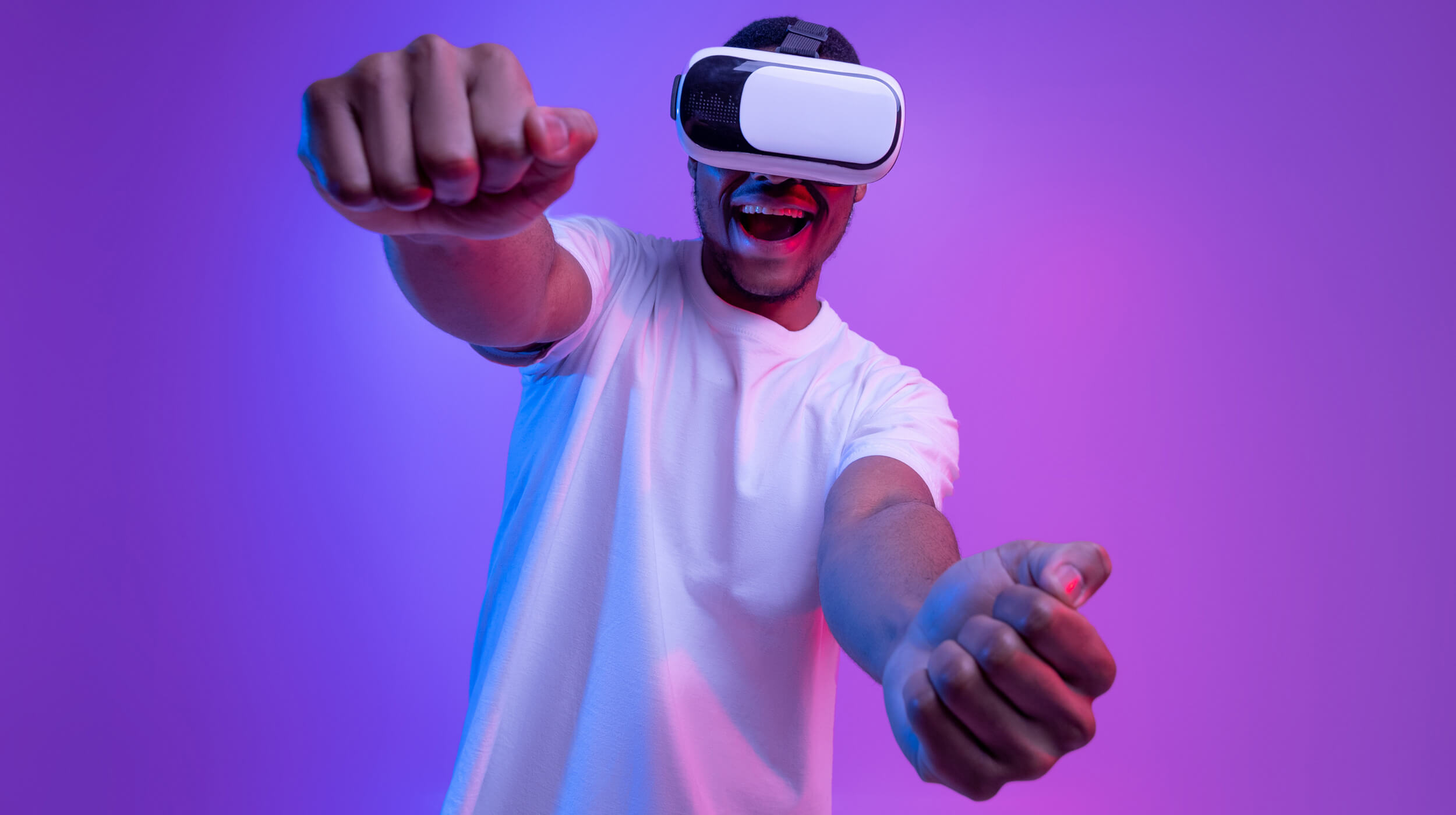
Should You Leverage VR for Events in the Future?
Virtual Reality isn’t just a trend — it’s redefining how brands connect with audiences. By blending immersive storytelling with cutting-edge tech, VR helps you stand out, create memorable experiences, and leave a lasting impression. As VR is set to become increasingly integrated into live experiences, there’s high value in staying ahead of Experiential Marketing trends as such. As of 2024, 93% of event planners are likely to use immersive technology to engage attendees.
RPR has over a decade of experience creating impactful Virtual Reality solutions for events, specializing in VR/MR headworn content, Mobile AR activations, Web-based or app-based experiences, 3D motion graphics for LED displays, AI-driven interactive displays and Immersive training simulations. Some of the advancements of VR in events include hybrid events or virtual spaces for the brand in the metaverse and in such situations, your brand choosing to be at the fore-front helps users remember trend-setters. Based on our tech trends, future developments in VR for events may include:
- Social VR Experiences: Collaborative environments where multiple users interact in shared virtual spaces.
- AI-Driven Personalization: Adaptive content that adjusts based on user preferences or actions.
- Improved Hardware: Lightweight, wireless headsets will make VR more accessible for event setups.
Whether you’re looking to create an unforgettable booth experience, showcase complex concepts, or bring your product to life, RPR can help turn your vision into reality.
Virtual Reality is transforming events by delivering immersive experiences that captivate and engage. 83% of event planners also think the technology that delivers immersive experiences would enhance their event ROI. With the right strategy and team, VR can cut through the noise, drive engagement, and create unforgettable moments for your attendees.
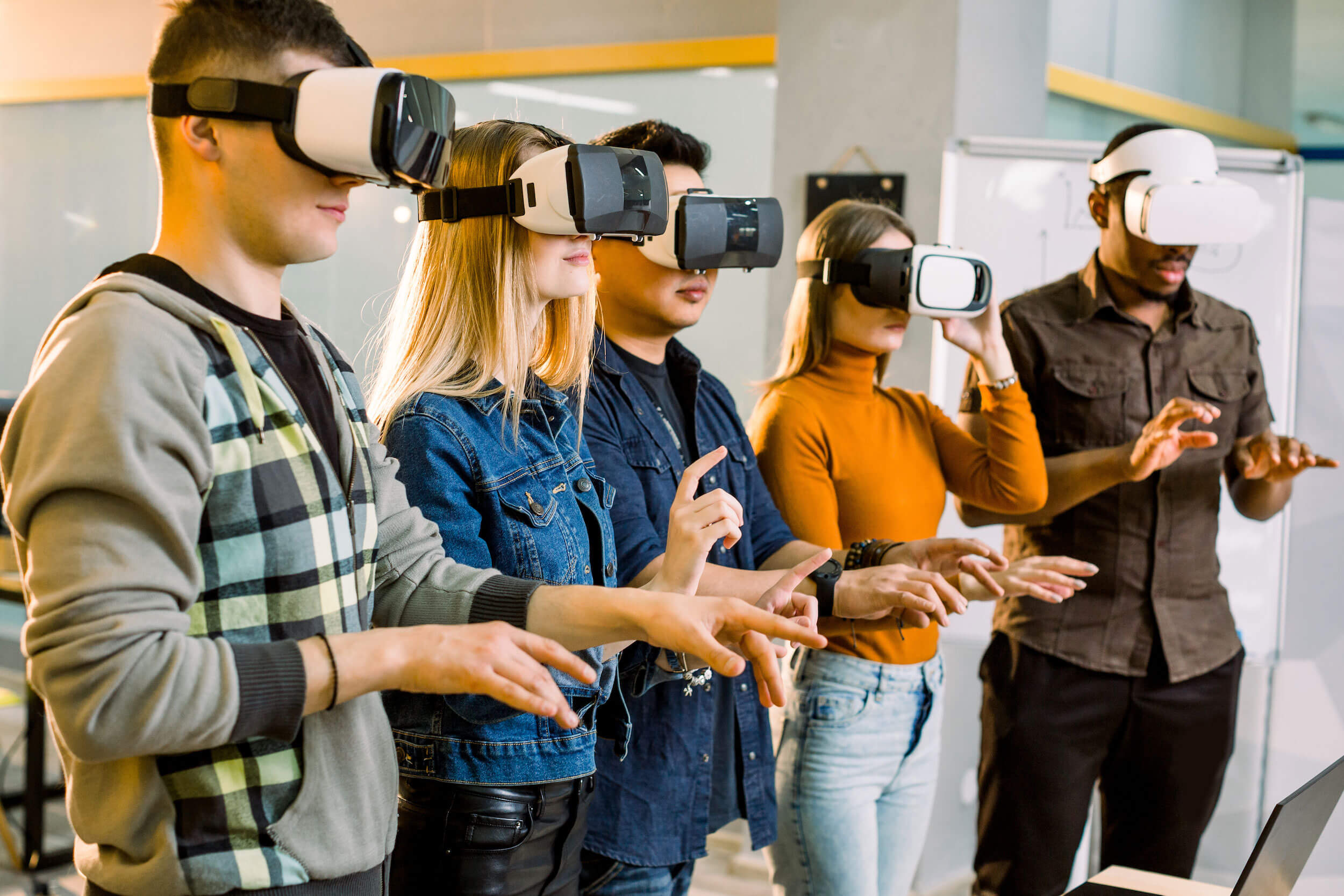
FAQs on Using Virtual Reality for Events
Does it make sense to use VR in Events?
Virtual Reality can help with visualization and add on interactions. It’s a step up from pamphlets, banners and digital images. If your product is too large or complex to bring to the event physically, you want to demonstrate a digital product or service in an interactive way, or simply transport users into a new environment, VR is the perfect guerrilla marketing choice to thrive with and enable connections with younger, tech-savvy audiences.
What VR headset should I use?
Devices like the Meta Quest 3, HTC Vive Pro, and Pico 4 Enterprise offer different strengths. Choose one based on your need for portability, visual fidelity, or enterprise features.
What’s the difference between VR and MR?
Virtual Reality is a fully immersed experience that transports the user to a completely different virtual environment whereas Mixed Reality overlays digital content in the user’s physical space. Mixed Reality is best used if you have content that should interact with the physical space like a character jumping from table to table. Whereas Virtual Reality might be better for an immersive training where you need to transport the user to your manufacturing line.
Are there other immersive or interactive solutions that don’t require a headset?
It doesn’t always make sense to create an experience that requires a headset. You need to find the right technology to fit your creative and business goals. Other options include Mobile AR which can be accessed through a phone or tablet, 3D displays like the Sony Spatial Reality Display, or LED walls with 3D animated videos.
How do I measure VR’s impact at my event?
VR metrics can include session duration, engagement data, and social sharing to measure your event’s success. Insights such as user gaze tracking, interactions, and dwell time can help gauge attendee interest and engagement.
References
- https://news.lenovo.com/f1-virtually-put-fans-in-the-drivers-seat-thinkreality-vrx/
- https://eonreality.com/eon-virtual-campus-tvet-cte/
- https://www.auganix.org/vr-news-lenovo-partners-with-formula-1-to-enhance-fan-experiences-with-vr/
- https://pmc.ncbi.nlm.nih.gov/arti cles/PMC11616384/
- https://www.linkedin.com/pulse/three-innovative-applications-vr-b2b-tradeshows-aswani-k-kota-nwojc/
- https://www.newsweek.com/virtual-reality-helping-designers-craft-new-cars-faster-less-waste-1801531
- https://flowimmersive.com/
- https://www.jasoren.com/virtual-reality-in-construction/
- https://congrex.com/topics-tags/event-technology-trends/
- https://www.virtualrealityrental.co/virtual-reality-for-conferences#virtual-reality-party-rentals
- https://www.sxsw.com/exhibitions/sxsw-xr-experience/
- https://english.news.cn/northamerica/20240311/1d22989aa033456bb31eda5bec3b9f22/c.html
- https://emperiavr.com/project/ralph-lauren/
- https://www.tradeshowlabs.com/blog/47-interactive-trade-show-ideas
- https://nxtinteractive.ae/blog/5-best-interactive-vr-games-for-events
- https://www.encoreglobal.com/news-releases/2024-outlook-research-insights-driving-the-events-industry/
